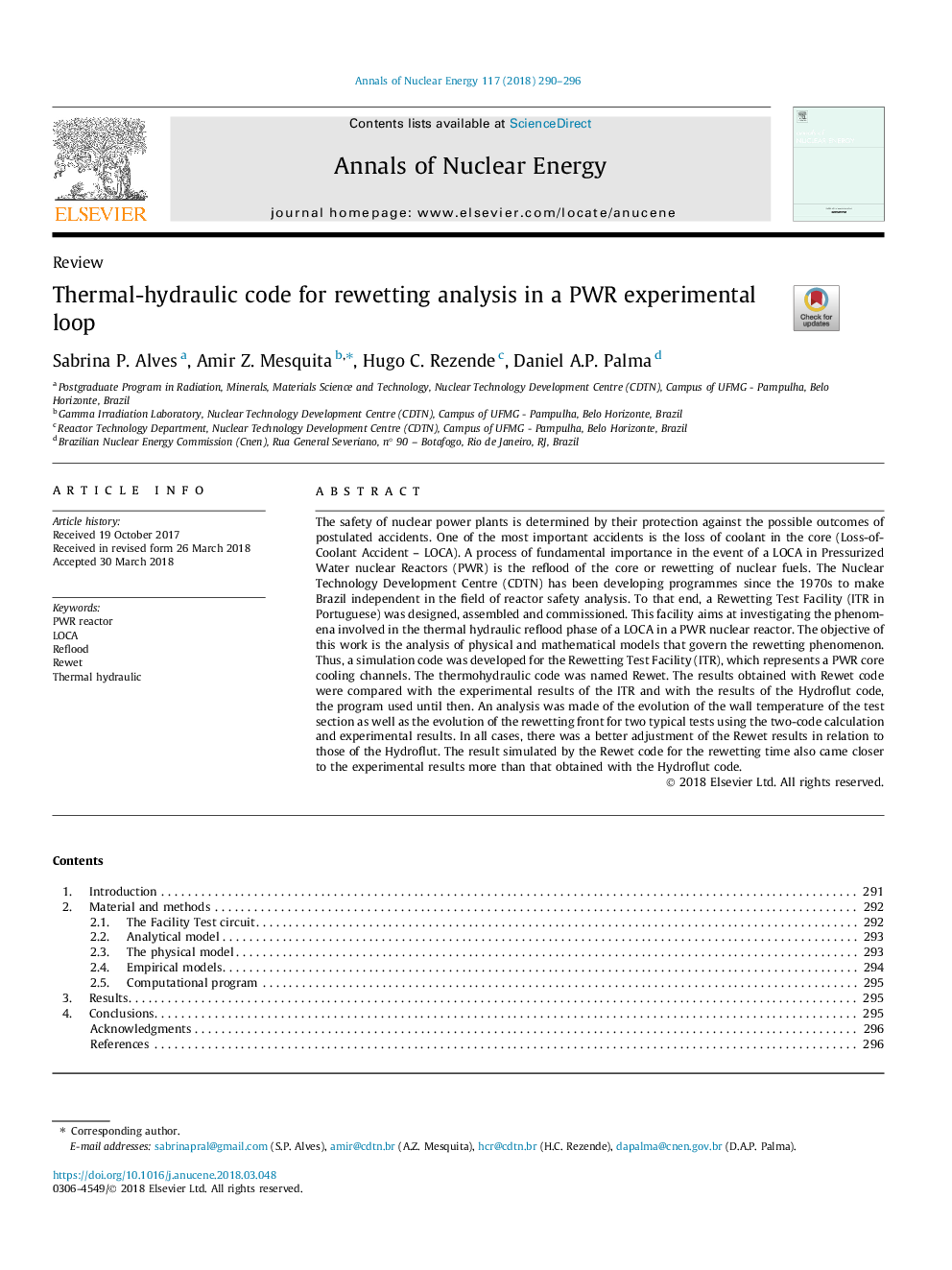| Article ID | Journal | Published Year | Pages | File Type |
|---|---|---|---|---|
| 8067017 | Annals of Nuclear Energy | 2018 | 7 Pages |
Abstract
The safety of nuclear power plants is determined by their protection against the possible outcomes of postulated accidents. One of the most important accidents is the loss of coolant in the core (Loss-of-Coolant Accident - LOCA). A process of fundamental importance in the event of a LOCA in Pressurized Water nuclear Reactors (PWR) is the reflood of the core or rewetting of nuclear fuels. The Nuclear Technology Development Centre (CDTN) has been developing programmes since the 1970s to make Brazil independent in the field of reactor safety analysis. To that end, a Rewetting Test Facility (ITR in Portuguese) was designed, assembled and commissioned. This facility aims at investigating the phenomena involved in the thermal hydraulic reflood phase of a LOCA in a PWR nuclear reactor. The objective of this work is the analysis of physical and mathematical models that govern the rewetting phenomenon. Thus, a simulation code was developed for the Rewetting Test Facility (ITR), which represents a PWR core cooling channels. The thermohydraulic code was named Rewet. The results obtained with Rewet code were compared with the experimental results of the ITR and with the results of the Hydroflut code, the program used until then. An analysis was made of the evolution of the wall temperature of the test section as well as the evolution of the rewetting front for two typical tests using the two-code calculation and experimental results. In all cases, there was a better adjustment of the Rewet results in relation to those of the Hydroflut. The result simulated by the Rewet code for the rewetting time also came closer to the experimental results more than that obtained with the Hydroflut code.
Keywords
Related Topics
Physical Sciences and Engineering
Energy
Energy Engineering and Power Technology
Authors
Sabrina P. Alves, Amir Z. Mesquita, Hugo C. Rezende, Daniel A.P. Palma,
